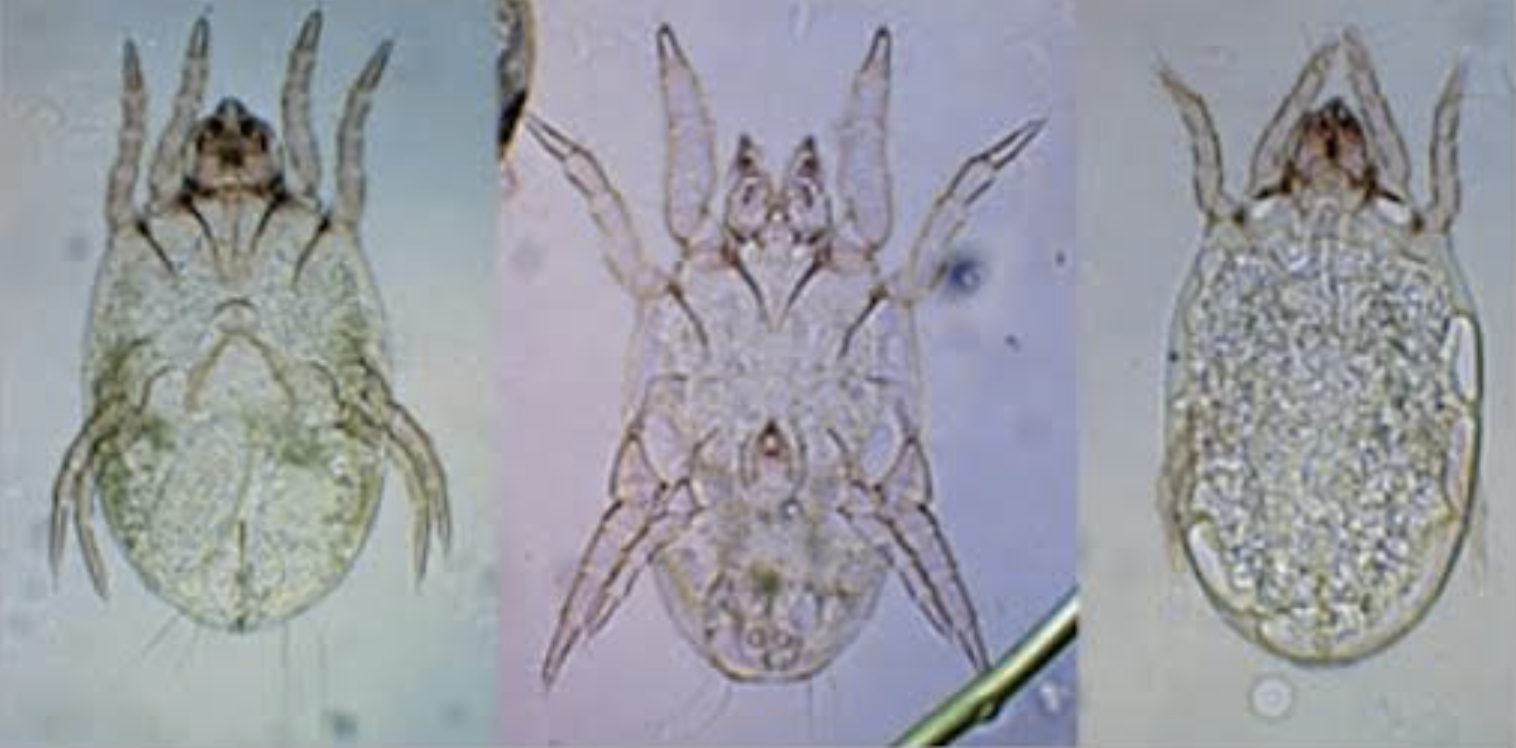Pancake Syndrome - Oral anaphylaxis from mite ingestion
As far back as 1993 clinical reports began to document cases of severe allergic reactions from baked food made with mite infested wheat flour. It is called 'Pancake Syndrome', or oral mite anaphylaxis (OMA). Medical opinion leaders are calling for all physicians to be made aware of OMA, how to diagnose it and how to educate patients on dust mite reduction.
What concerns the researchers today is the fact that many cases of OMA can go undiagnosed or listed as unexplained. To counter this they have made a comprehensive list of the known risks. As listed below.
Patients at risk are those who have an established allergy to dust mites and manifested in diseases such as; rhinitis, asthma, atopic dermatitis, conjunctivitis, or any combination of these diseases. Included in the list are patients allergic to domestic mites, and also known to be sensitive to acetylsalicylic acid, ie. aspirin.
The symptoms of OMA are common to anaphylaxis. Symptoms include breathlessness, vomiting, wheezing, coughing, itching, skin rash, angioedema etc. Symptoms typically appear within the first 10 to 45 minutes after ingestion. Most patients diagnosed with OMA are adolescents or young adults.Foods can be pancakes (most common), sponge cakes, pizza, pasta, wheat bread, white sauce, meat or fish dusted with wheat flour.

Dermatophogoides farina mites (left, female; middle, male; right larva) identified in tempura batter mix flour by microscopic inspection (original magnification x 100)
The allergen thought to be involved is the Group 2 mite allergen, a heat stable or 'thermoresistant' allergen and major trigger in allergic disease. Interestingly, following baking the allergen appears somewhat reduced in skin-prick test results.
Reporting of Pancake Syndrome or OMA occurs mostly in tropical and subtropical countries with high temperature and high relative humidity. However these conditions can occur as man made environments in kitchens.
Some of the dust mites associated with (OMA) are Dermatophagoides pteronyssinus, D. farinae, Blomia tropicalis, and the storage mites Lepidoglyphus destructor, Tyrophagus putrescientiae, Tyreophagus entomophagus, Blomia freemani, S medanensis, and Aleuroglyphus ovatus. These mites are known as either house dust mites or storage mites, but they all can live indoors if the conditions are right. Indeed, in an old, damp mattress scientists found storage mites and house dust mites living together, yet as separate species of mites.Although Pancake Syndrome is not yet fully recognised and the incidences of reported OMA are relatively rare, the World Allergy Organisation advises that the risk of anaphylaxis from mite contaminated wheat flour can be reduced by keeping packets of opened flour in a refrigerator or freezer where conditions for mite infestation are hostile. This hygiene exercise should be conducted with reduced exposure to all domestic mites indoors.
'Anaphylaxis from ingestion of Mites: Pancake anaphylaxis', 'J. Allergy and Clinical Immunology', 2013, Vol 131; Issue 1: p 31-34.
'Anaphylaxis after ingestion of beignets contaminated with Dermatophagoides farinae', Erben AM, Rodrigues JL, McCullough J, Ownby DR, 1993, J Allergy Clin. Immunol. 92: 846-849
'House dust mite ingestion can induce allergic intestinal syndrome'. Scala G., 1995, Allergy, 50: 517-519
Systemic anaphylaxis after eating storage-mite-contaminated food, Matsumoto T, Hisano T, Hamaguchi M, Miike T, 1996 Int. Arch. Allergy Immuno.l, 109:197-200
Mite contaminated foods as a cause of anaphylaxis. Sanchez-Borges M, Capriles-Hulett A, Fernandez-Caldas E, et al, J Allergy Clin Immun. 1997;99(6 Pt 1):738-43
'The Importance of Storage Mite Allergens in Occupational and Domestic Environments', Chambers J, Thind B, Dunn JA, Pearson DJ, 1999, Proceedings of the 3rd International Conference on Urban Pests, Wm H Robinson, F Rettich and G.G. Rambo (editors)
'The occurrence of mite-containing wheat flour', Matsumotos T, Satoh A, Petiatr. Allergy Immunol. 2004 Oct. 15 (5):469-471
'Systemic anaphylaxis after the ingestion of pancake contaminated with storage mite Blomia freemani,' Wen DC et al, Ann Allergy Asthma Immunol., 2005, Dec. 95; (6):612-614
'Oral mite anaphylaxis (pancake syndrome) also observed in children', Sanchez-Borges M, Capriles-Hulett A, Caballero-Fonesca F. Ann Allergy Asthma Immunol. 2006 May; 96(5):755-6
'Dust mite ingestion-associated, exercise-induced anaphylaxis', Sanchez-Borges M, Iraola V, Fernandez-Caldas E, Capriles-Hulett A, Caballero-Fonseca F, J. Allergy Clin. Immunol. 2007 Sept; 120(3):714-6
'Anaphylaxis after ingestion of wheat flour contaminated with mites.' Blanco C, Quiralte J, Castillo R, et al. J Allergy Clin Immunol. 1997; 99(3):308-13
Additional Information on the pancake syndrome Sanchez-Borges M, Capriles-Hulett A, Caballero-Fonseca F, Ann. Allergy Asthma Immunol. 2008 Aug 101 (2) 221. Comment on: Ann. Allergy Asthma Immunol. 2008 Apr; 100 (4) 397-8
Pancake Syndrome (Oral Mite Anaphylaxis), Sanchez-Borges M, Suarez-Chacon R, Capriles-Hulett A, Cabellero-Fonseca F, Iraola V, Fernandez-Caldas E, World Allergy Organization Journal, May, 2009 Vol. 2, Issue 5, pp. 91-96
'Dust Mites', Matthew J. Colloff, 2009, Mites Associated with Storage Food Products, Page 51. CSIRO Publishing, ISBN 978-0-6430-6589-5.

